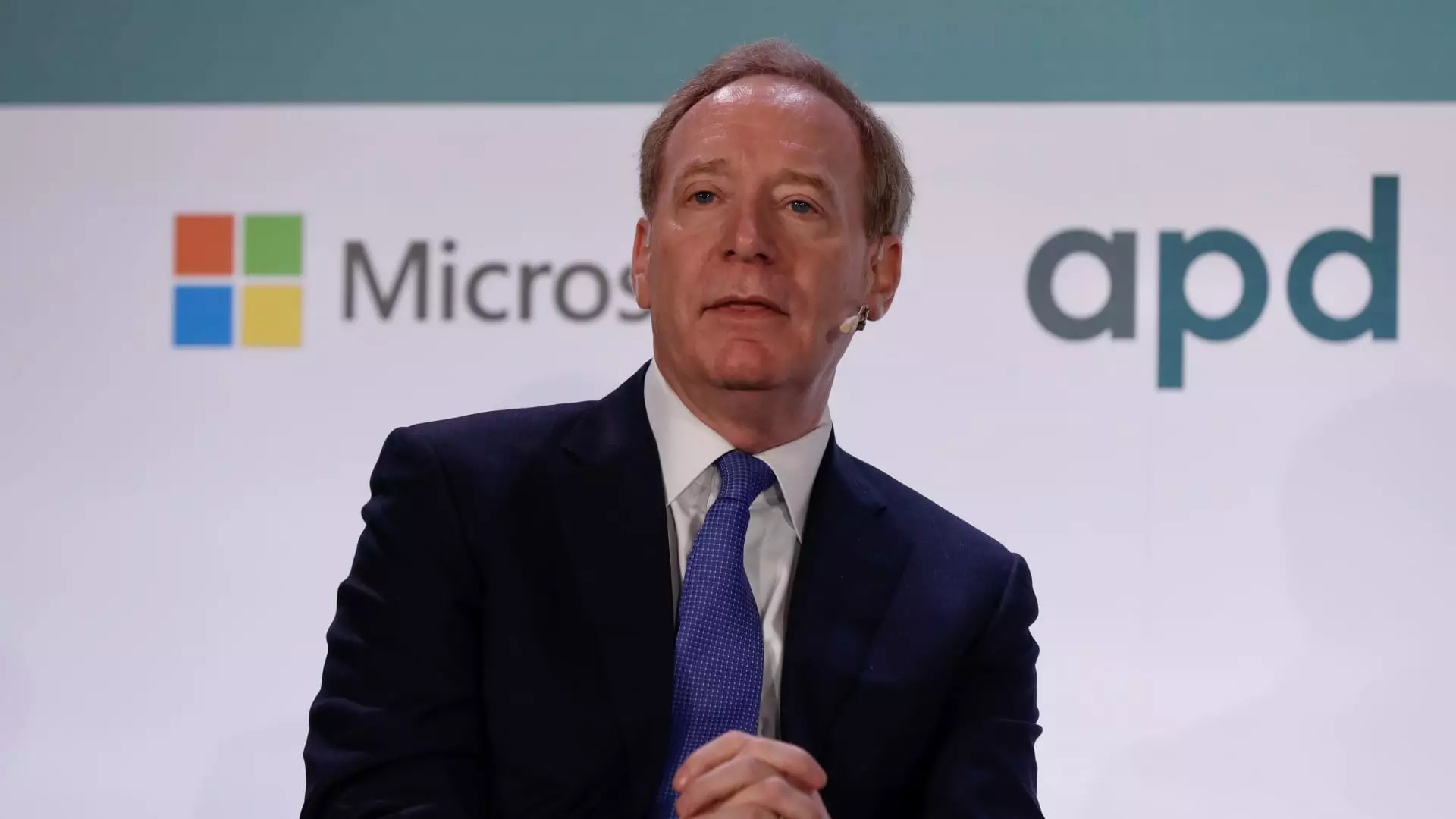The global technological rivalry between the United States and China has intensified over recent years, prompting all stakeholders to reassess their perceptions of each other’s capabilities. In a landscape where innovations such as artificial intelligence and 5G are pivotal, misconceptions about the pace and progress of each nation can lead to misguided strategies. Microsoft’s President Brad Smith, speaking at the Web Summit in Lisbon, challenged the prevalent narrative that China is lagging behind the West. Instead, he highlighted that China is not only advancing rapidly but may also be nearing an equivalent technological footing with American advancements.
Recent developments in Chinese technology reinforce Smith’s observation. Notably, the unexpected launch of a smartphone by Huawei demonstrated download speeds reminiscent of 5G technology. This announcement raised eyebrows in the tech community, particularly concerning the implications of U.S. export sanctions designed to curb China’s technological aspirations. Such feats suggest that the Chinese tech sector is innovating and developing capabilities that might circumvent existing limitations, ultimately making them competitive players on the world stage.
In the face of potential misjudgments and escalating tensions, Smith emphasizes the necessity for U.S. and European companies to collaborate rather than compete exclusively against one another. A merged effort could not only bolster economic growth but also enhance global technological advancements. By leveraging strengths from both worlds, companies can foster innovation and develop solutions—particularly in areas like artificial intelligence—that can benefit a wider demographic, thereby enriching economies worldwide.
Microsoft’s extensive operational footprint in China since 1992 illustrates the company’s commitment to engaging with the Chinese market. Although Microsoft’s CEO Satya Nadella has expressed that the focus is not solely on China as a domestic market, the firm’s involvement with local businesses demonstrates a significant strategic approach. The presence of major U.S. firms in China often hinges on the bilateral relationship dictated by both governments, further complicating the tech landscape’s dynamics. This relationship underscores the importance of navigating governmental interests to effectively operate in a country where regulations can be both advantageous and challenging.
As political climates shift within the U.S.—for instance, the transition between the Biden and Trump administrations—the future of trade and technological exchanges with China remains uncertain. Smith’s perspective asserts that while U.S. companies may face increasing scrutiny regarding collaborations with China, certain sectors, particularly those serving specific industry end-users like automotive and coffee chains, may continue to experience a degree of operational comfort. Understanding this complex interplay will be pivotal in predicting future trends in the global tech arena.
The assertion that China is trailing behind the West in technology is fundamentally flawed and overly simplistic. As companies like Microsoft navigate these uncharted waters, it is crucial for stakeholders across the globe to remain open-minded and adaptable. By prioritizing collaboration over division, the international tech community can foster an environment of shared growth and innovation that stands to benefit everyone. The gradual leveling of the playing field between the U.S. and China is not just a challenge but an opportunity for reimagining global technological futures.

